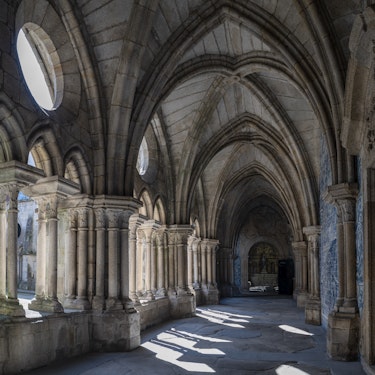More about: 10 Things to Do in Porto in January
Porto is one of the most touristic cities in Portugal, which is not surprising considering its great cultural heritage. Its architectural richness, its gastronomic offer and its artistic proposal make Porto one of the best destinations to travel to.
If you are planning a visit to this Portuguese city in January and want to prepare your travel itinerary, keep in mind that everything Porto has to offer is usually joined by all kinds of plans, from the most typical to some unusual ones.
1. Eat Bolo Rei on Reis Day

As in Spain and other countries, Portugal celebrates the Christian holiday of Dia de Reis or Three Kings Day. Therefore, if you are in Porto on January 6, it is the ideal opportunity to get to know the way the locals celebrate this holiday.
One of the traditions for that day is to try the Bolo de Rei, the Portuguese version of the Three Kings' cake. Unlike the Spanish sweet, the Bolo de Rei contains raisins and nuts, as well as port wine. You can order it in a bakery or take it with a hot chocolate in a cafeteria.
It is certainly a delicacy and you can also try it when you book a guided tour of Porto in January. And if you want to know more traditions linked to the Christmas holidays, I recommend you to take a look at the 10 best things to do in Porto at Christmas.
2. Listen to the janeiras

Another plan I propose you in Oporto in January is closely related to Christmas. The janeiras are a type of traditional Christmas music from Portugal. They are popular songs with years of history that during the month of January you can hear in the Christmas markets, as well as in some bars and establishments
Christmas in Porto is a party with a tradition strongly linked to music. In the past, the streets were filled with bands and groups singing the traditional janeiras. Nowadays, this no longer takes place. However, you can listen to the popular songs of the city in different venues and establishments
This plan is perfect if you are interested in knowing the popular culture of the city and if you are a music lover. In this case, I also advise you to book a ticket to a Fado show in Porto, another of Portugal's traditional musical genres. In this article you can see which are the best fado shows in Porto.
3. See the Sé cathedral and take shelter from the rain

One of the best things to see and do in Porto in January is the most important religious building in the city. In addition, it is the perfect activity to do on a rainy day, which are common in January.
After booking tickets for the Sé Cathedral you should go to the Batalha neighborhood, in the highest area of the city, where it is located. Its construction dates back to the 12th century, although it has undergone many reconstructions, the latter being what makes it so special.
The cathedral is the result of a mixture of different styles, including Baroque, Romanesque and Gothic. It was declared a National Monument and what I like most are the views it offers, thanks to its strategic location. Also worth admiring is the cloister, which dates back to the 14th century and allows access to the Casas do Cabildo.
4. Enjoy the colors of winter on the Dom Luis I bridge

Another of the most emblematic constructions of the city is the Dom Luis I Bridge, the symbol of the commercial growth that Porto experienced in the 19th century. Visiting it is a perfect activity to do on a sunny day in January, since you will not be hot during the walk
What makes your visit essential are the views it offers of the city, embellished by the brightness of winter. From there you will be able to see the different cruise ships that navigate the river, as well as the little houses of Miragaia. I recommend you to book a cruise on the Douro in advance because I assure you that you will feel like it.
The bridge has two levels, one through which the metro passes and another exclusively for vehicles. If you are going to cross the bridge on foot, you can do it on both floors, since they have a pedestrian lane. Besides, did you know that it is the work of a disciple of the great architect Gustave Eiffel?
5. Visit the wineries of Vila Nova de Gaia

First of all, it should be clarified that, technically, Vila Nova de Gaia is a different city from Oporto. Although only the Douro River separates them, the truth is that, when you cross the bank, you will be crossing the boundaries of Porto.
To get to this beautiful city, all you have to do is cross the Dom Luis I bridge, either on foot or by public transport. But if the weather is nice, it may be a good idea to hire a rabelo, a small wooden boat that was originally used to transport wine.
One of the most popular activities is the visit to its famous wineries. You can hire a route through the most famous ones or do the tour on your own, although you will have to book in advance. If this activity tempts you, you should know that you can also book a visit to a winery in Porto if you prefer to stay in the city.
6. Give your legs a rest and take a ride on streetcar 22
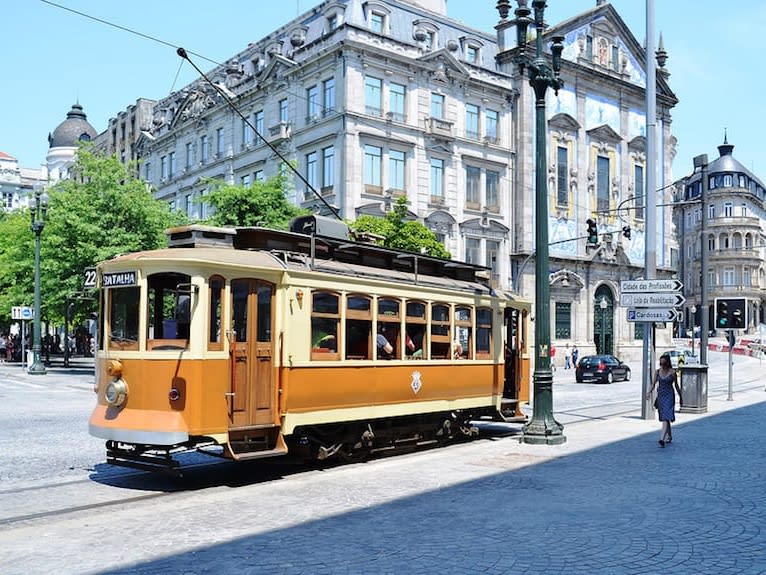
After so much walking and so many hills, your legs are probably asking for a break. If so, I recommend you to ride the beautiful and classic streetcar 22. This plan is perfect for the typical bad weather days of January, as you will be able to see the main sights of the city indoors.
Although you can also hop on Porto' s tourist bus and reserve your seat, I recommend the streetcar. Streetcar 22 runs through the city center, starting its route at Rua de Carmo and ending at Batalha, where you can get off or return to the point of origin by a different route than the one already taken.
Although it is not a route too long to be done on foot, there are some very steep streets that are not recommended for families or for those days when you are more tired. Therefore, this is one of the best things to do with children in Oporto.
7. Discover the street art of the city

If you are an art lover and you have some free time in Oporto, it is essential that you dedicate some time in your itinerary to contemplate its street art.
Porto is a city, above all, cultural and artistic richness exceeds the walls of its best museums flooding the steep streets that compose it.
One of my favorite pastimes when I visit Porto is to get lost in the city in search of graffiti, each one more curious. Why do I propose this plan for the month of January? In this month, the streets are emptier of tourists, so you can walk through it with total tranquility and see the graffiti without difficulty.
The best graffiti in Porto
Nobre e Leal, a work by the artist Mr. Dheo, stands out in the Trindade subway. You will be amazed by the hyperrealism and the contrast of its colors.
Another of the best graffiti in the city pays homage to the Spanish cultural heritage. It is a graffiti called Don Quixote, which represents the two protagonists of Cervantes' star work.
In addition to the above, this work of art stands out for its historical importance, as it was the first legal graffiti in Oporto. The merit is not only of a single artist, but in it three renowned graffiti artists collaborated: Mesk, Fedor and Mots. It is located at the intersection of Diogo Brandão and Miguel Bombarda streets.
8. Get to know São Bento Train Station

The São Bento train station is one of the most beautiful in Europe and, if you don't believe me, you only have to see it with your own eyes to realize what I'm saying. This plan is ideal for your trip to Porto in January, as you will be able to take shelter from the rain and cold.
This station began to provide its services at the end of the 19th century. The building was built on the ruins of the Convent of São Bento, which burned to the ground in the 18th century. Imitating the French model, this station is the work of the Portuguese architect José Porto, Marques da Silva.
In addition to its curious history and architecture, one of the most striking things about the station are the tiles that decorate the main concourse. There are more than 20,000 of them and, through them, you can take a journey through the history of Porto, as they illustrate the most famous episodes of the city.
9. Get to know the Casa da Musica

With this plan, you will have the opportunity to get to know a much more modern construction. The Casa da Musica, a futuristic style building designed by Dutch architect Rem Koolhaas.
The origin of Casa da Musica is due to a competition held between Rotterdam and Portugal, in which it was stipulated that a Portuguese architect should design a work in Holland, at the same time that a Dutchman did the same in Portugal.
Finally, in 2005, this modern building was born, which breaks with the classical architecture of Porto. In fact, the latter is what makes it more interesting, providing a magnificent visual effect when seen next to the old churches of the city.
My advice for visiting the Casa da Musica
You can visit the Casa da Musica to admire its architecture or attend one of its concerts. My recommendation is to check the monthly calendar to schedule your visit with a musical performance, preferably a Fado concert.
This way, you will get a much more complete experience. In addition, you can take shelter from the January cold for a few hours.
10. Climb the Clérigos Tower and enjoy the views

Another of the most important buildings of Porto's religious heritage is the Clérigos Tower, which crowns the church of the same name and is one of the most interesting monuments in Porto.
The architectural ensemble dates from the late eighteenth century and the tower is the highest in Porto, so you can imagine the panoramic views it offers. In addition, from there you will be able to take the best pictures taking advantage of the winter light and the fog that usually rises on the river and gives Porto a mysterious air.
Of course, everything has a price: to get to the top, you will have to climb more than 200 steps. The soundtrack is orchestrated by a total of 49 bells, which scare more than one tourist. To get here, you can make use of the city's public transport, whether by metro, streetcar or bus.
Temperatures in Porto in January
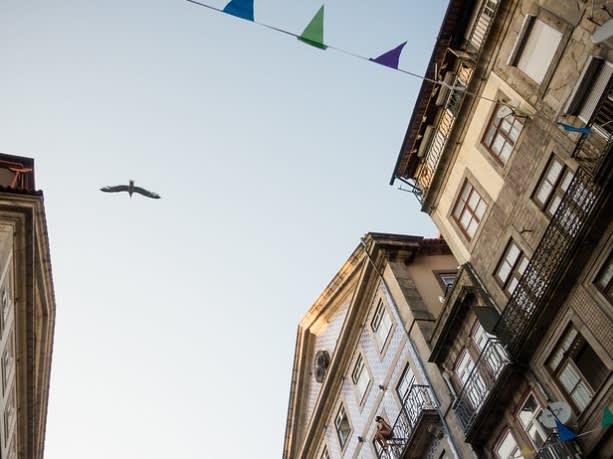
Compared to January temperatures in other European cities, Porto's weather in this month is quite pleasant. The city has an average temperature of about 10°C and, to top it off, snow is not part of Porto's weather plans.
However, it is true that rainfall is frequent, so you will have to take it into account when packing your suitcase. Don't forget to pack a good raincoat and rain boots. Of course, always carry an umbrella when you go sightseeing.
In case you plan to visit nearby cities (something that I strongly recommend), take into account the possible temperature changes that may occur at your destination. Especially, if you intend to book a tour to Aveiro from Opoto.
Prices in Porto in January
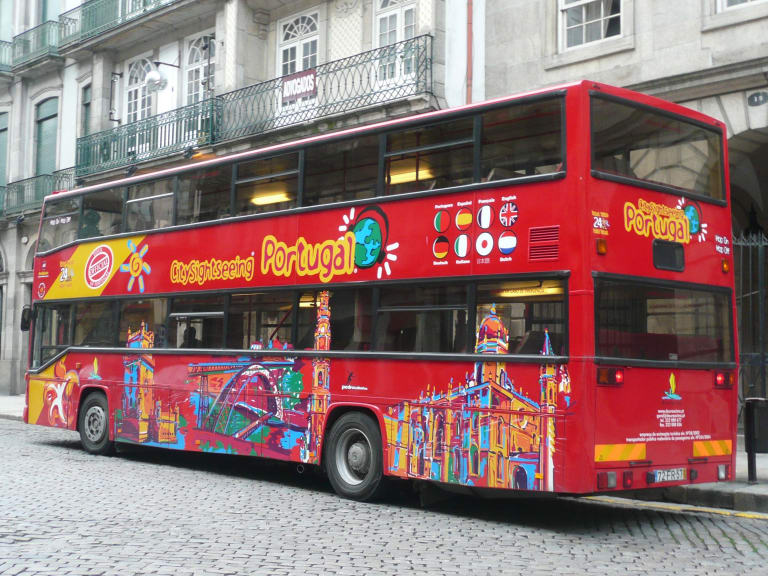
Portugal has experienced a tourist boom in recent years, something that is motivated by the measures of the country's government. Thus, Portugal stands out for the huge amount of tourists it attracts in the months of July and August.
This, obviously, is reflected in prices, which go through the roof during the summer season. However, while Porto tends to be expensive in summer, in winter it is not so expensive. This month is low season in the city, so you will find the trip more economical.
Porto's tourist inflow in January

In addition to the favor you will do to your pocket traveling to Porto in January, you will also be able to enjoy your trip with greater peace of mind. Since it is low season and there are fewer tourists.
Thus, you will not have to wait in queues to enter the sights, you can access a greater number of sites and enjoy your walks without having to go dodging people.
Finally, this does not mean that you should not visit the city on other dates, as there are many things you can do in Porto in summer.
What to bring in your suitcase to visit Oporto in January
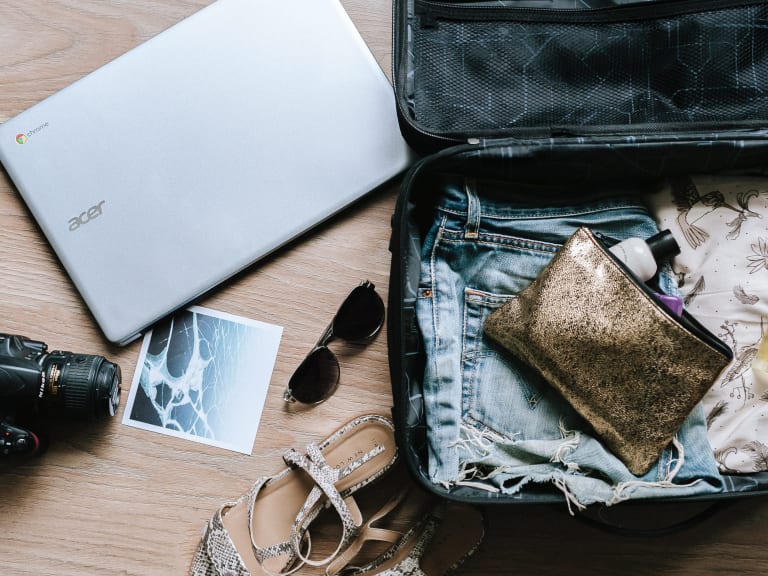
Rains are usually the bread and butter of Porto in January. Therefore, you should bring clothes suitable for those days. Be sure to pack warm clothes with hoods, which are usually a great help for unexpected precipitation.
On the other hand, in addition to waterproof boots, it is also advisable to pack good walking shoes in your luggage. These should be shoes that you have already tried before and that are comfortable, since you will be doing long walks during your trip.
Finally, do not forget to include in your suitcase some formal clothes for those situations that require it, such as restaurants or theaters.


